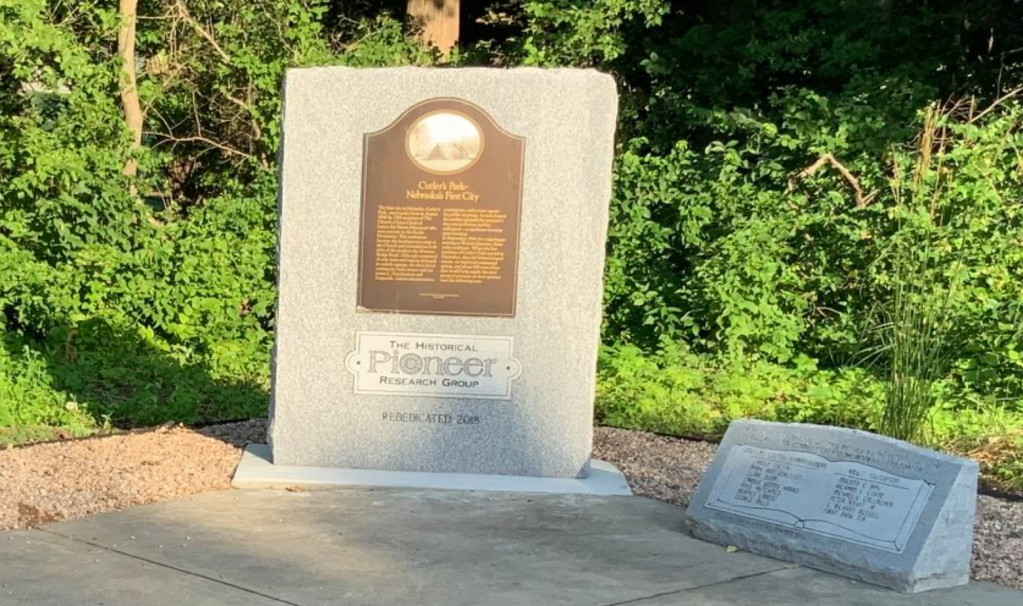Before 1900, Nebraska state law was favorable to squatters, allowing people who lived on a property for ten years without being disturbed by the owner to claim the title of the property, as long as they could prove they’d been there that long.
One area that benefited a lot from that law was a little strip in North Omaha, from North 11th Street on the east to North 13th on the west; Nicholas Street on the south to Locust on the north. This area was home to the North Omaha rail yards, but the railroads didn’t have without any concern for the squatters were starting putting up their shacks there as early as the 1860s.
The area at the south end of Squatter’s Row was a lowland swamp that served as a city dump. Squatters used tin cans, automobile fenders and all kinds of trash to build up the land. Their homes were “constructed of tar-paper, tin cans and other material salvaged from the dump; many of the squatters earn their living by sorting the discarded junk and selling the salable articles.”
Claiming the higher ground since the 1860s, Cornelia “Granny” Weatherford was “one of the first.” In 1897, the Nebraska laws favoring squatters were changed and Squatter’s Row began emptying out. However, Granny Weatherford stayed until she died in the late 1930s.
The neighborhood, which wrapped around the Union Pacific’s North Omaha Railyard, was comprised of dozens of shanties. There was an area called Vinegar Flats and another called Blind Pig Alley.
The City of Omaha began a massive “slum clearance” program in the 1930s, and Squatter’s Row was likely cleared out and demolished then. In 1939, the place was mentioned in the federal publication called Nebraska: A Guide to the Cornhusker State. The research for this book was conducted by the Works Progress Administration in 1935, so it was probably demolished immediately afterwards.
There are people in Omaha who remember parts of Squatter’s Row—including its tar paper shacks and piles of apparent “junk”—existing as late as the 1950s and 60s. Other people have suggested that the tent cities in East Omaha today are merely an extension of these accommodation in modern times.
However you see the history, the fact is that there are no sign commemorating Squatter’s Row anywhere in Omaha. Homelessness continues to be seen as a disease needing to be ended, instead of a symptom needing to be treated and cured. Hiding around the city, sleeping in cars and couches, and living “off the radar” is how many people exist throughout Omaha, right now.
There was a time Squatter’s Row was for them.
You Might Like…
- A Biography of Granny Weatherford
- A History of North 16th Street
- A History of East Omaha
- Historic Neighborhoods in North Omaha
MY ARTICLES ABOUT HISTORIC NEIGHBORHOODS IN NORTH OMAHA
National Register of Historic Places Historic Districts in North Omaha: 24th and Lake Historic District | Benson Downtown Historic District | Country Club Historic District | Dundee/Happy Hollow Historic District | Fairacres Historic District | Fort Omaha Historic District | Minne Lusa Historic District | Nicholas Street Historic District
Historic Neighborhoods in North Omaha: Bedford Place | Belvedere Point | Bemis Park | Benson | Briggs | Bungalow City | Carter Lake, Iowa | Central Park | Clifton Hill | Collier Place | Creighton University | Crown Point | DeBolt | Druid Hill | East Omaha | Fairfax | Florence | Florence Field | Fort Omaha | Fontenelle View | Gifford Park | Gold Coast (Cathedral) | High Point | Jefferson Square | Kellom Heights | Kountze Place | Lakewood Gardens | Little Russia | Long School | Malcolm X Memorial | Miller Park | Miller Park Duplex Historic District | Monmouth Park | Montclair | Near North Side | North Downtown Omaha | Omaha View | Orchard Hill | Plum Nelly | Prettiest Mile in Omaha | Prospect Place | Raven Oaks | Redman | Saratoga | Sherman | Squatter’s Row | Sulphur Springs | Ponca Hills | Wakonda | Walnut Hill | Winspear Triangle | Wyman Heights
Lost Towns in North Omaha: Benson | Briggs | Cutler’s Park | DeBolt | East Omaha | Florence | Saratoga | Sulphur Springs | Winter Quarters






Leave a comment